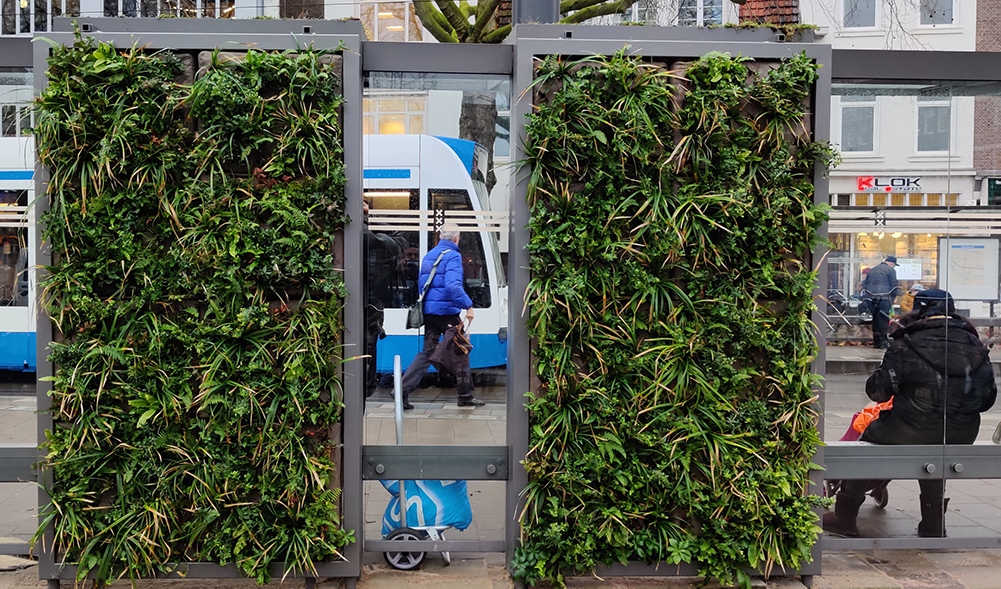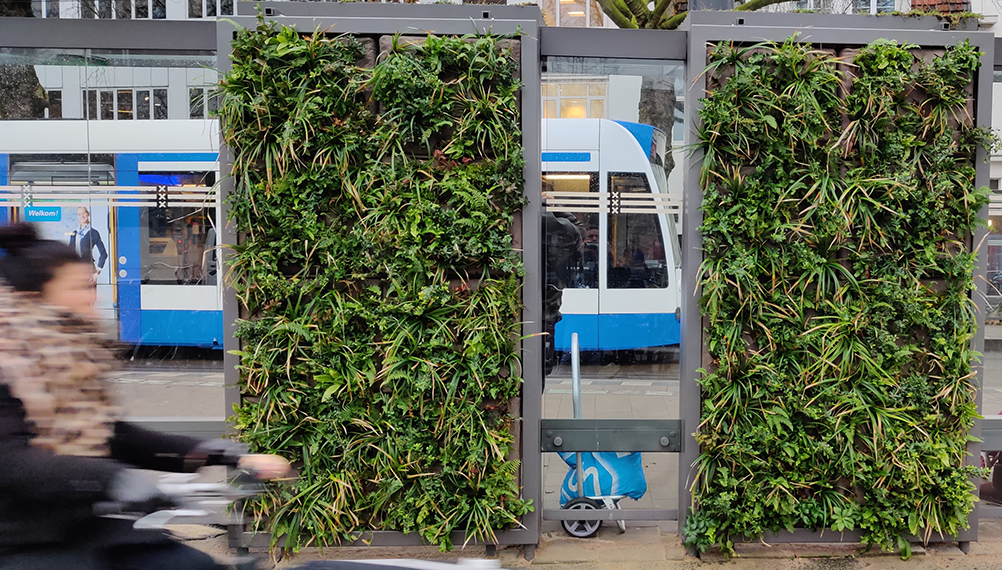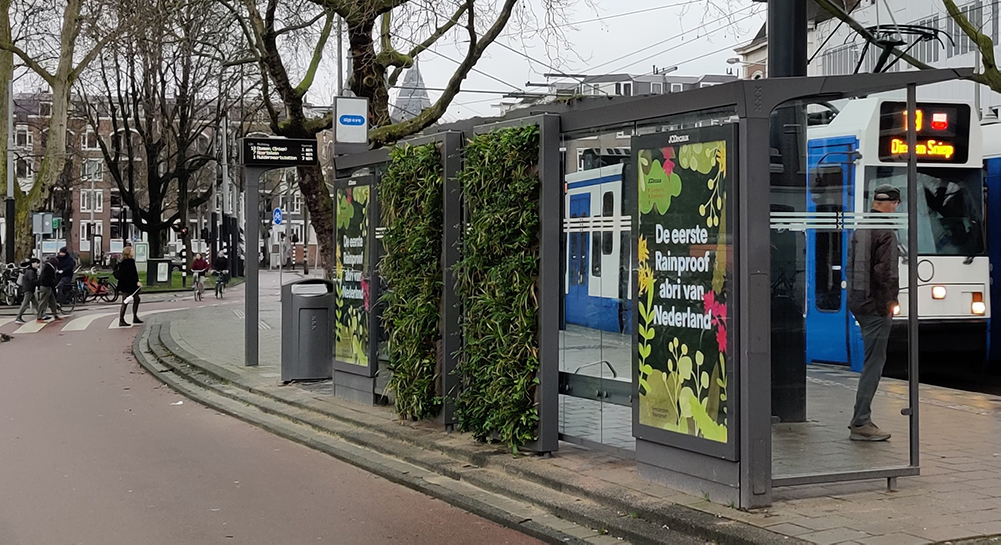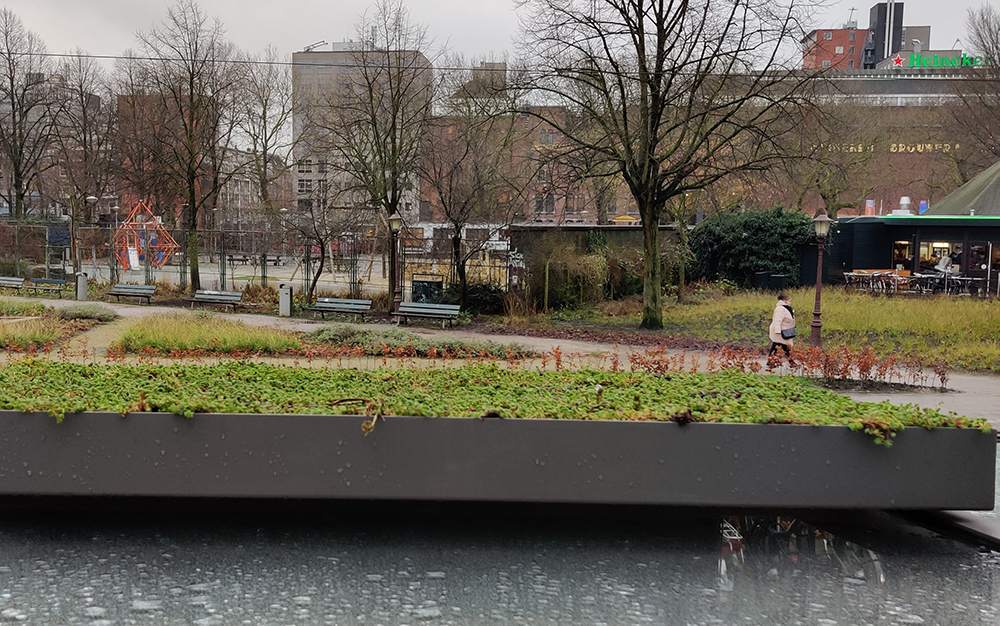
- Inspiring People -
- 3mins -
- 658 views
AMSTERDAM’S TRAMWAY STOP NOW ALSO A BEE & BUTTERFLY STOP
It doesn’t only have a green roof… it has a stunning green wall too. Besides looking wild, it also contributes to the city’s biodiversity, supporting insects such as bees and butterflies.
Amsterdam trials green tram stops
Amsterdam has introduced the first green tram shelter that automatically waters the plants, using its own irrigation system that works with locally collected rainwater. In summertime it can provide cooling, and its plants contribute to cleaner air. Once the pilot scheme has proven successful, Amsterdam could start transforming all 500 tram shelters. Oh, and did you know that Amsterdam’s trams are 100% powered by Dutch wind energy?




The Idea is getting a mixed reaction from Amsterdam inhabitants
Some people raised concerns on social media that this solution cannot replace trees and sustainable forms of transport, and advised that car-free central zones would do more good to the environment in such a big city.
Source: TheMayor.eu
Have you heard about the “Bee stops” in Utrecht?
Last year, another Dutch city became famous for a similar “green” solution. The city of Utrecht completed a wide-scale installation of pollinator-friendly green roofs on its bus stops. 316 bus shelters were furnished with sedum-covered roofs with the objective to contribute to a healthier living environment. These bus stops feature LED lighting and 96 of them were outfitted with solar panels. They all have a bamboo bench and their base is made of recycled concrete. Finally, their maintenance will be carried out with electric vehicles. Check them out here.

